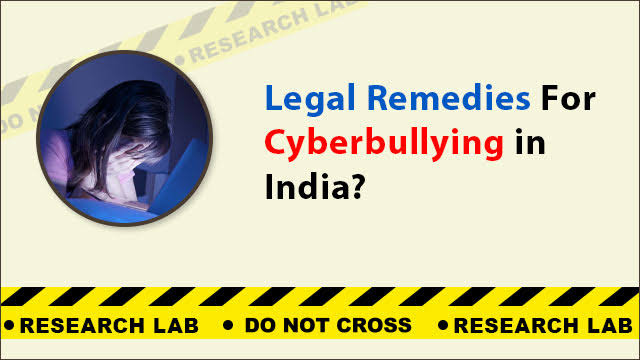CYBER BULLYING AND LEGAL REMEDIES
Introduction
Cyberbullying, bullying via technology, is prevalent on college campuses. Despite its occurrences, there is limited research among this population. Bullying incidents that take place in more conventional face-to-face situations sometimes begin in public places like parks, schools, and schoolyards. Long the focus of research, cyberbullying is a relatively new form of bullying that has almost sparked a devastation tidal wave in these environments. In middle and high schools all around the United States, cyberbullying, or bullying through electronic media, is an issue that is getting worse. However, cyberbullying continues on college campuses after students graduate from high school. Cyberbullying is also characterized as the deliberate use of online or digital intimidation, embarrassment, or harassment.
Effects of Cyberbullying
There are many detrimental effects of cyberbullying. Cyberbullying is a form of bullying that is commonly concealed from adults, and its impact can include poor academic performance, school dropout, physical violence, and suicide. Cyberbullying is associated with negative consequences like low self-esteem, family issues, academic difficulties, school violence, and delinquent behavior. However, the worst consequences are suicide and violence. While cyberbullying has some of the same negative impacts as traditional face-to-face bullying, it can be done without any physical contact or knowledge of the perpetrator’s identity. These random acts of harassment go well beyond the scope of traditional face-to-face bullying because unlike traditional bullying, cyberbullying can occur not only at school, but in the home and any place where technology is accessible.
Legal remedy under Information Technology Act, 2000

Section 66A of the Information Technology Act, 2000, deals with the transfer of offensive messages through communication services, etc. This Section provided genuine victims of cyber harassment with a possible chance to acquire instant relief against subject matter that may be demeaning or harmful. Its repeal has left police authorities powerless in the face of the growing threat of cyberbullying, which is on the rise.
The penalty for identity theft is outlined in Section 66C.
Personation and the use of a computer resource for fraud are covered in Section 66D of the IT Act.
The IT Act’s Section 66E addresses the penalties for violating someone’s privacy.
The penalty for electronically publishing or distributing pornographic material is covered by Section 67.
Section 67A addresses the penalties for electronically publishing or transferring content that contains sexually explicit acts, images, or other content.
Section 67B addresses the penalties for electronically publishing or transferring content that depicts children in sexually explicit acts, images, or other forms.
CONCLUSION
Indian laws are proficient and well-drafted when it comes to punishing traditional offences that take place in the physical territory. Some laws to punish offences committed in cyberspace have been carefully drafted to achieve the goals of justice. The important feature of cyberspace is that, in contrast to physical space, it is constantly expanding and developing. Because of the same reason, it is still difficult to predict how crimes will manifest themselves; cyberbullying is one example of such a crime. It can take many distinct structures and be prosecuted under various regulations of current legislation, but doing so will have an impact on the development of cyber laws in India in the long run. There is a need to define different laws for cyber-crime offences because the mode, implications, gravity, and likely targets are all different from those of traditional criminal offences.
Author:- Trisha Chatterjee , a Student of Bharati Vidyapeeth, New Law College, Pune



One thought on “CYBER BULLYING AND LEGAL REMEDIES”